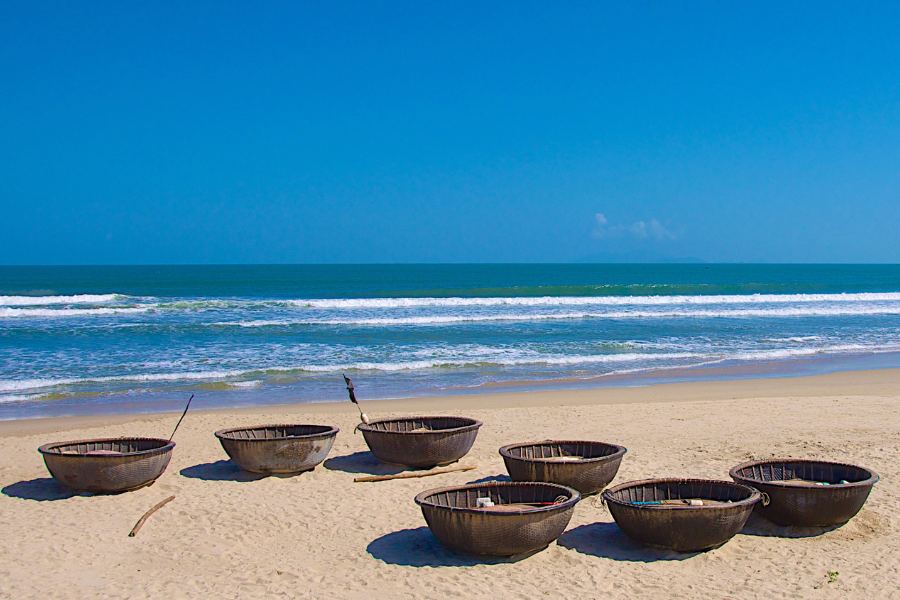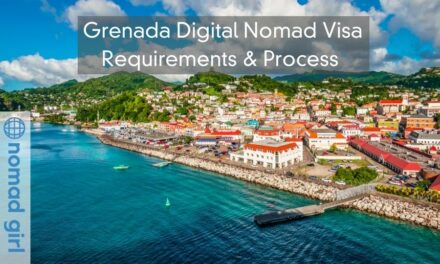Vietnam has been a country where I loved to spend time as a digital nomad before the pandemic. I have fond memories of my long-term stays in Hoi An and Ho Chi Minh City back in 2017 and 2018. In March 2020 Vietnam completely closed down for tourism for a period of 2 years. Vietnam reopened completely to tourists again back in March 2022. The Vietnam government initially sets a target of 5 million tourists for the year 2022 but this seems not to have been met. Only a paltry 3.5 million international tourists have arrived in Vietnam for the 2022 year. In comparison in 2019, Vietnam had 18 million international tourists.
I will take a look at why Vietnam for digital nomads and long term travellers is currently a nightmare to visit.
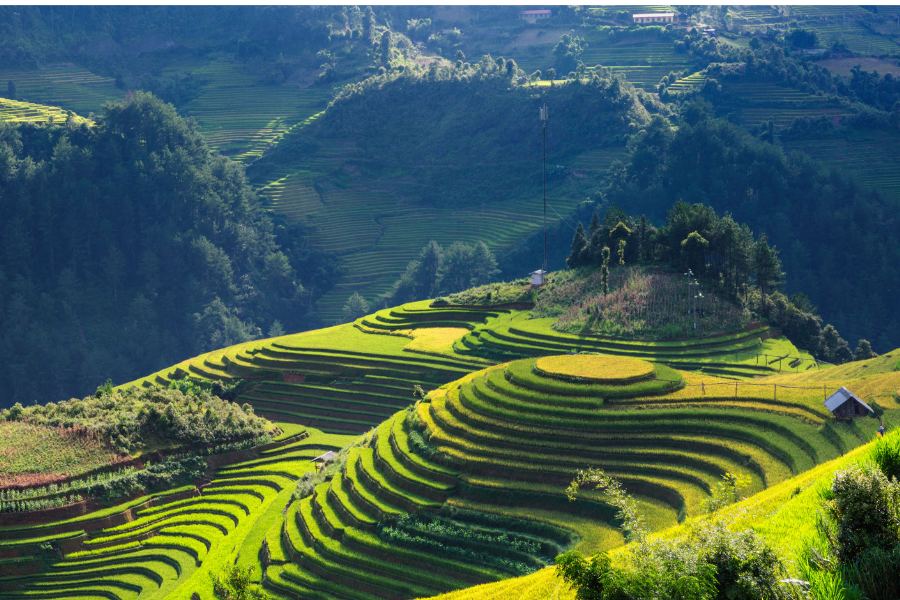
Early To Reopen
Vietnam was the earliest country in South East Asia to reopen but has reaped the least rewards in terms of a tourism rebound. Thailand started fully opening up on 1 July 2022 and managed to get 11.5 million international tourists exceeding its target for 10 million tourists. Why has Vietnam squandered its early reopening lead to a tourism industry that was worth 18.5% of GDP in 2019?
It comes basically back to six things:
1. Limited E-visa availability
Vietnam has a list of 80 countries that can apply for an e-visa which allows for a stay of 30 days. The list of countries is listed here below.
| Andorra | Greece | Palau |
| Argentina | Hungary | Panama |
| Armenia | Iceland | Papua New Guinea |
| Australia | India | Peru |
| Austria | Ireland | Philippines |
| Azerbaijan | Italy | Poland |
| Belarus | Japan | Portugal |
| Belgium | Kazakhstan | Qatar |
| Bosnia and Herzegovina | Korea (South) | Romania |
| Brazil | Latvia | Russia |
| Brunei | Liechtenstein | Samoa |
| Bulgaria | Lithuania | San Marino |
| Canada | Luxembourg | Serbia |
| Chile | North Macedonia | Slovakia |
| China, Hong Kong & Macau | Malta | Slovenia |
| Colombia | Marshall Islands | Solomon Islands |
| Croatia | Mexico | Spain |
| Cuba | Micronesia | Sweden |
| Cyprus | Moldova | Switzerland |
| Czech Republic | Monaco | Timor Leste |
| Denmark | Mongolia | United Arab Emirates |
| Estonia | Montenegro | United Kingdom |
| Fiji | Myanmar | United States of America |
| Finland | Nauru | Uruguay |
| France | Netherland | Vanuatu |
| Georgia | New Zealand | Venezuela |
| Germany | Norway |
There are a lot of websites offering e-visas for Vietnam, and they all want to take a cut for their services. This is the official government one: https://evisa.xuatnhapcanh.gov.vn/trang-chu-ttdt
2. Visa on Arrival not available anymore
The visa on arrival system in Vietnam was complicated, you first had to get an invitation letter from a licenced travel agent and with this letter you can then apply for a visa on arrival. Depending on the invitation letter you could apply for a 30-day or 90-day tourist visa in single or multiple entry forms. This was a hassle as depending on the line you could have had to wait for an hour and a half to get your visa. At the moment the visa on arrival is not working anymore. But you would not know from the many online invitation letter providers that continue to advertise their services.
It means if you are not on the E-visa list you will have to go to the Vietnamese embassy to get a tourist visa.

3. 90-day Tourist Visas not available anymore
As the visa on arrival is not there anymore there is also no 90-day tourist visa on arrival anymore. This was the bread and butter for digital nomads wanting to stay in Vietnam and was less of a hassle compared to the Thailand 90-day tourist visa stay. In Thailand, this always included a visit to the immigration offices after 60 days to get a 30-day extension. Vietnam was also more favourable to Bali, another digital nomad destination.
4. The competition gets it
Countries like Thailand and Malaysia which compete for tourist and digital nomad dollars make it easier.
Thailand
Thailand has a visa exemption scheme for 64 countries which allows for 30-day stays, but to boost tourism this has been extended to 45 days till 31 March 2023. Then there is the visa on arrival for 18 countries which was 15 days and has been extended to 30 days till 31 March 2023. The third option is the 60-day tourist visa which you can apply online for. All of the options can be extended for 30 days at a local Thai immigration office.
Malaysia
Malaysia has a 90-day visa free stay for 66 countries and a 30-day visa free stay for 94 countries. Malaysia has also recently launched a Digital Nomad Visa which in my opinion is one of the best.
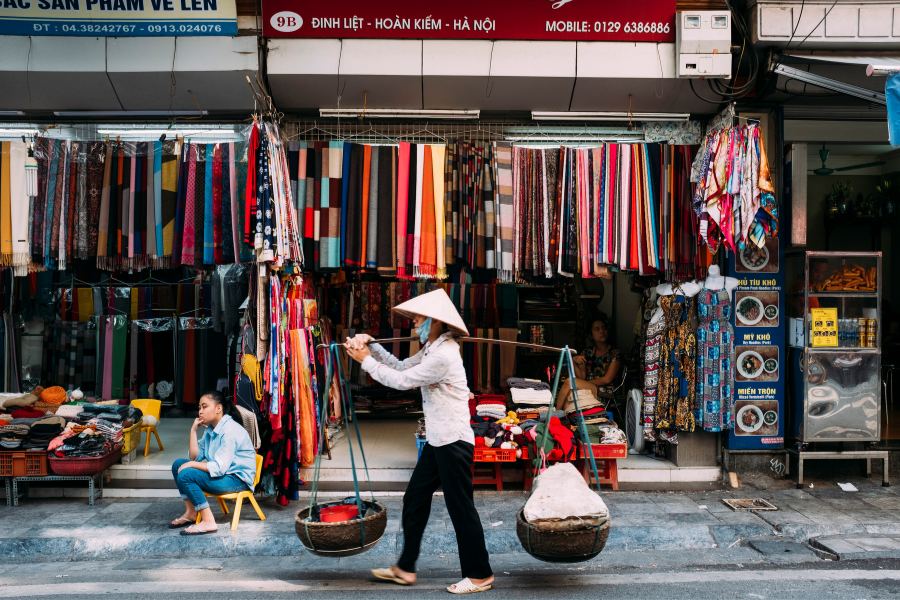
5. Poor communication
What is really bad is the absolutely poor communication of all this. Almost none of the online e-visa and invitation letter operators mentions that you can not apply for the visa on arrival. Secondly and unfortunately this is a very Vietnamese problem, you do not know which website is official. My google search for the Vietnamese embassy in Bangkok showed an official-looking address for local search but when you click on the website it shows you again a commercial online e-visa and invitation letter operator that does not communicate the current situation.
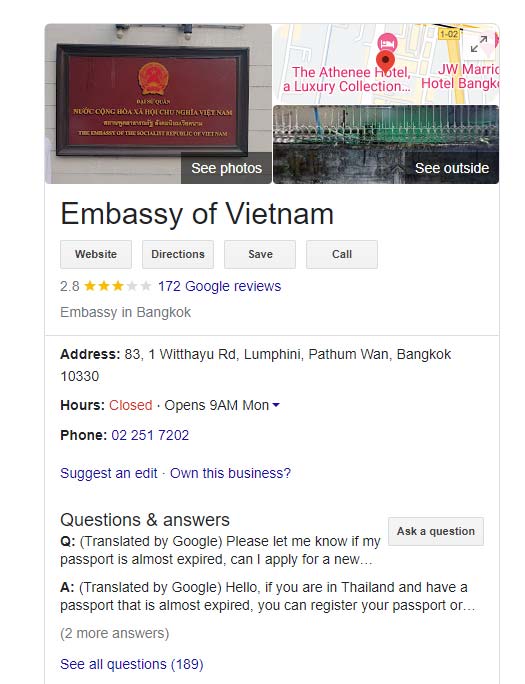
The Vietnam embassy address in Thailand has been squatted by a commercial e-visa and invitation letter website. With zero communication.
6. Chinese used to make up a large percentage of tourist arrivals
This is a bit unfortunate for Vietnam and the effects that the zero covid regime of China had on its tourism numbers. 31% of the tourist arrivals in 2019 came from China. Now that the zero covid policy has stopped there should be a huge growth. South Korea is another big chunk of tourism arrivals with 24% and this country only opened up in June 2022.
In February I will come to the end of my 90 day stay in Thailand and I booked a trip and long-term AirBnB accommodation in Vietnam under the assumption that I could still get the 90-day single entry tourist visa. I am fuming that I did not do my research better, but then I noticed how poorly communicated this all is. I hope this changes before mid-February as I do not look forward to a visa run of 4 hours one way to the Laos border with all the hassle.

One Small Plus Side
Looking at AirBnB and the various Facebook groups for Vietnam long-term rental accommodation, I am noticing bargain rents compared to pre-covid. In Hoi An I see rents of brand new 3 bedroom homes including a pool for $800 a month. If you do not mind the visa runs every 30 days or you can wait till the 90-day visa comes back, you will be able to stay in nice places for very affordable prices. This opportunity will not last forever. I will be the first to write about this if the 90-day visa comes back.

Suggestions
I am a seasoned traveller and I have been to Vietnam many times and even I have trouble understanding what is the current situation. This is what scares tourists and digital nomads away. They will go for easier options.
If I could influence with this article some government officials responsible for the growth of tourism, this is what I would suggest:
- Open up the e-visa scheme to more countries.
- Get rid of the reselling of e-visas, it creates confusion and does not help to communicate changes in the visa regimes.
- Offer 90-day e-visas online and get completely rid of the invitation letter scheme. I know it employs people, but you can employ people to run the e-visa scheme checks and offer a much better and streamlined product to tourists as well as avoid all the hassle at the airport.
- Get rid of the full-page tourist visas, I have lost already 6 pages of the 32 to Vietnam and will have to apply for my passport renewal earlier due to the lack of empty pages.
- Work on a dedicated digital nomad visa. A good local example is Malaysia’s De Rantau Nomad pass.
